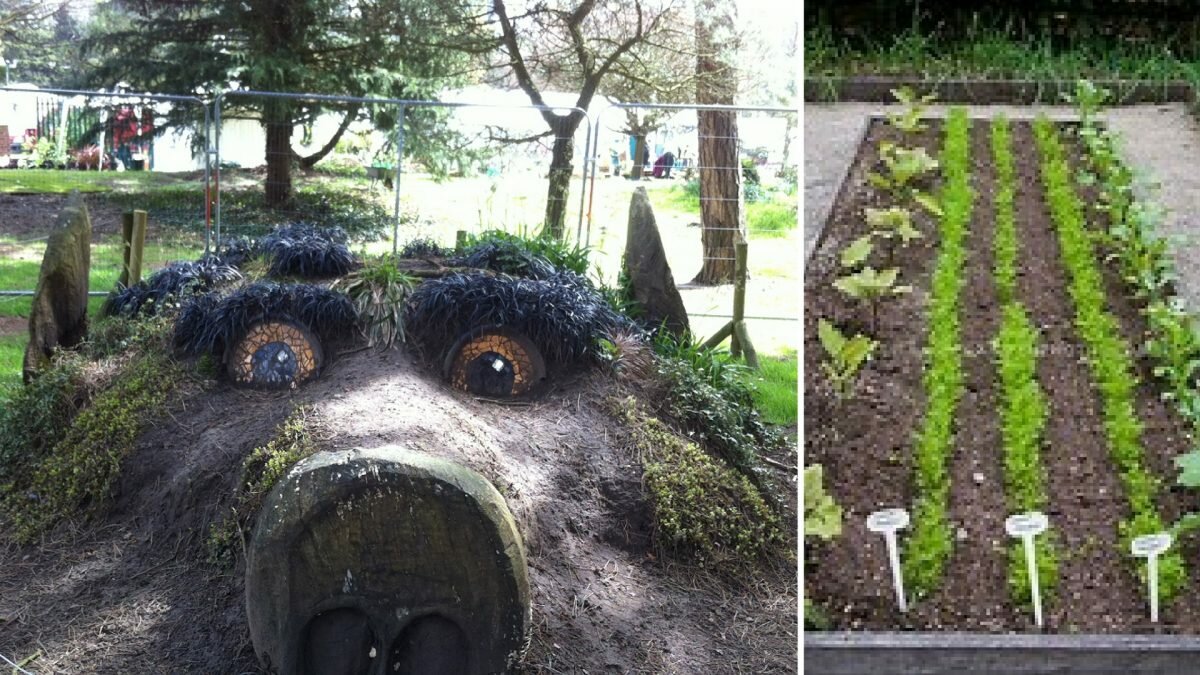Grow a School Garden – Mar/April 2018
Monthly blog by Chris Collins on How to Create and Grow a School Garden
Late frosts
Despite the fact that it feels like a late spring, especially in a school gardening calendar when time is everything, let me reassure you that this is most definitely an illusion. It is quite normal to have frosts and cold snaps as late as April.
Winter has a late kick but the important thing to know is plants will always catch up. The only down side is spring will be quicker this year. Nature will get a wriggle on and you need to be on your toes to make sure you enjoy it in all its glory.
Sturdier seedlings
Your more tender crops that have been grown inside will be growing away, either on a classroom window shelf or a glasshouse. Remember it’s still too early to plant them out. Grow them on, making sure you turn them away from the light every day. This stops them stretching and becoming too tall and skinny (elongating is the fancy expression).
I also like to stroke or lightly tickle any young seedlings that are growing in a protected environment. I know that sounds strange, but this mimics the outdoor elements and encourages your young plant to become more stocky and resilient and will make for a better plant in the long run. It’s also a great way for the pupils growing the plants to bond with their new plants .
If you have already sown some crops outside, please don’t worry; plants will bide their time and soon appear when conditions are more favourable. Don’t be afraid to re-sow another line if you feel that’s better. Now that the weather is changing, everything will shift quickly.
Sowing tips
Remember the rule of sowing in a straight line. Weeds will be on the march, they have waited for their moment and you need to be able to tell what is a Carrot, Lettuce, Rocket seedling, etc. and what is a weed. Sowing your crops in a straight line, in your raised or open bed will let you tell your plants and weeds apart.
Remember also to always label your rows/plants. Good record keeping is a great curriculum activity and makes your crop growing easier.
Planting in wet soil
Just a quick word if you’re growing in open beds, in borders for instance (rather than raised beds). There is a good chance that the soil is very wet, don’t worry, you can still sow seeds, just get an old scaffold or wooden plank and stand on that instead of the soil. This will stop the soil becoming to compact and then not draining properly.
Explore your soil
So, as I’ve mentioned, standing on soil when its wet will make your gardening more difficult but what type of soil do you have?
Get pupils to get their hands in the soil. Does it stick together, even form a ball? Then it’s a clay soil. Find out what that means – in science clay behaves different to a sand soil.
A sandy soil will be fine and run through your fingers and will drain quicker. It’s also much better for Carrots. Understanding your soil will make you a better gardener. It will also make you wiser about the soil you have in any raised beds your school may have. Remember all soils will improve by adding good compost.
Having fun in the garden with designs
It’s still time to think of fun ways to garden. What are your classroom or gardening club’s ideas? How can we make our growing and outdoor spaces more fun?
The outdoors should always be a place of discovery, of mystery and should be a place for hands on teaching.
My project for this blog is to make, using recycled materials, something completely unusual for your school grounds. Have an art competition, have a collection point for materials and grow some plants to bring it to life. The imagination is the most important tool.
Are your pupils designers? A project like this will soon see. To get you started have a look at my Ogre’s face we designed and built. I look forward to seeing your gardening pupils’ creations.
Happy Gardening everybody. Spring is here!
Chris Collins
Head of Organic Horticulture – Garden Organic





